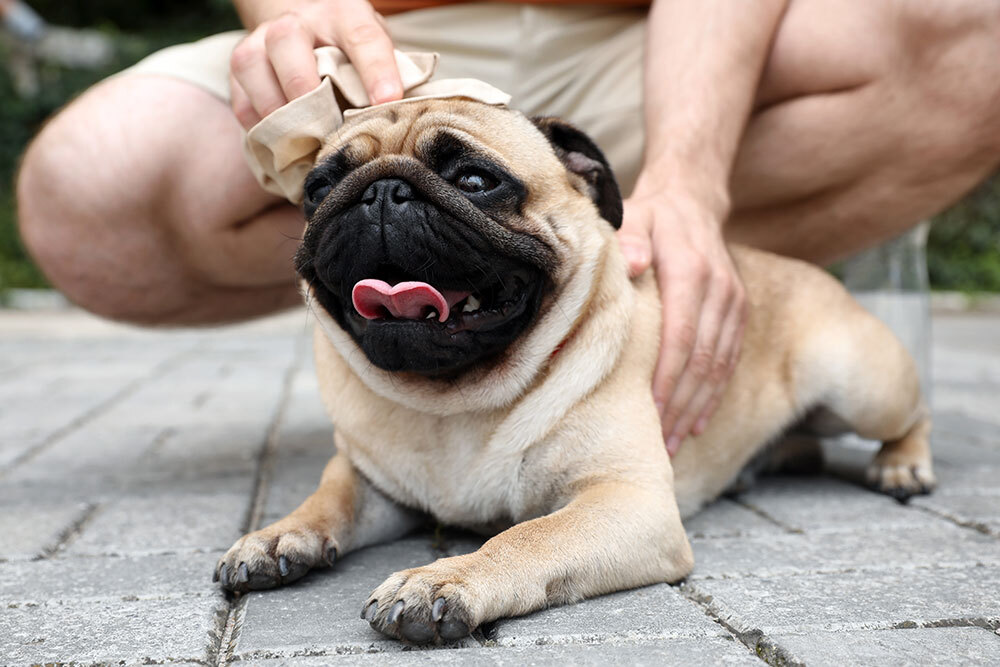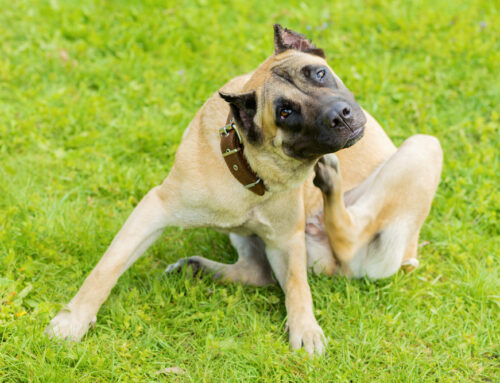Hot Weather, High Risk: Preventing Heat Stroke in Pets
Summer in Wyoming can feel magical—crisp alpine air, endless sunny skies, and the perfect weather for adventure. But as we soak up the season alongside our pets, it’s easy to forget that they don’t regulate heat the same way we do. Here at Pinedale Animal Hospital, we’re all too familiar with those frantic calls: “My dog is panting like crazy!” or “She just collapsed after our morning hike!” Our goal is to help you spot when summer fun turns dangerous, recognize the warning signs of heat stroke, and stay one step ahead of it.
Heat Stroke: More Than Just Overheating
When your pet’s internal temperature climbs above 104°F and their body struggles to cool down—panting in dogs, excessive grooming in cats—that’s when things escalate. Unlike humans, pets don’t sweat to regulate their temperature, which means they rely heavily on behavior and panting. Heat stroke is the advanced stage of overheating and, if not treated quickly, can cause organ damage or worse.
What Pushes Pets Past Their Limit
Our pets don’t always need a marathon to overheat. A midday walk on a humid afternoon, a quick run across a sun-baked parking lot, or even a short stint in a parked car can send them into distress. Brachycephalic breeds—think Bulldogs, Pugs, and Persians—are especially vulnerable, as are pets with extra weight, heart issues, or respiratory challenges. Making small changes, like timing walks around the cooler parts of the day, can reduce stress significantly. AAHA has some excellent tips on avoiding common summertime dangers.
Why It’s So Scary—Fast
Heat stroke isn’t just about overheating—it triggers a dangerous chain reaction inside your pet’s body. Once their internal temperature spikes, organs begin to shut down rapidly. The kidneys may stop filtering properly, the liver can become inflamed, and the brain is especially vulnerable to swelling and damage.
One of the most serious complications we see is disseminated intravascular coagulation (DIC)—a condition where the body’s clotting system goes into overdrive, forming small clots that use up clotting factors and platelets. The result? A terrifying risk of both uncontrolled bleeding and blocked blood flow to organs.
Even in less extreme cases, severe dehydration can quickly disrupt electrolyte balance, cause heart arrhythmias, and lead to shock. Pets lose water rapidly through panting, drooling, and vomiting, which makes rehydration an immediate priority.
These are medical emergencies—every minute counts. That’s why knowing the early signs of heat stroke can make the difference between a full recovery and long-term complications (or worse). Heavy panting, bright red gums, lethargy, or staggering shouldn’t be brushed off. With cats, watch for more subtle signs like open-mouth breathing or hiding in cool, dark spots. AAHA’s outdoor cat safety guide is a great tool if you have feline family members.
When You Suspect Heat Stroke
If your pet seems overheated, move them to a cool area and wet them with lukewarm—not ice-cold—water. Place fans nearby and offer small amounts of water while you call us. Avoid overcooling, as it can cause blood pressure to drop dangerously low.
At Pinedale Animal Hospital, we’ll start by checking vitals and conducting a full physical exam. Bloodwork is essential to evaluate kidney and liver function, clotting ability, and electrolyte balance. In critical cases, we may run coagulation profiles to monitor for DIC.
Treatment often includes:
- IV fluids to rapidly rehydrate and flush the system
- Oxygen therapy for pets showing respiratory distress
- Anti-seizure medications, if neurologic symptoms are present
- Gastroprotectants to address vomiting or GI bleeding
- Close monitoring for cardiac arrhythmias, urine output, and temperature regulation
Severely affected pets are hospitalized with 24/7 care, as complications can continue to develop even after the initial crisis has passed.
Smart Precautions That Work
Here are a few practical steps that can make all the difference:
- Walk early or late in the day to avoid peak heat.
- Provide constant shade and fresh water.
- Never leave your pet unattended in a car.
- Try cooling gear like vests or bandanas.
- Stay aware if your pet’s a brachycephalic breed or has health conditions.
- Protect their paws—hot surfaces can burn, and AAHA’s paw safety tips are a helpful resource.
Cool-Down Ideas at Home
Simple at-home strategies can help your pet beat the heat:
- Set up fans or AC for indoor retreat spaces.
- Fill a kiddie pool or sprinkler in the shade.
- Offer frozen treats safe for pets.
- Use cooling mats or damp towels—just steer clear of sunblock products not made for pets; refer to the ASPCA sunscreen guide for safe options.
- Schedule stimulating play times inside on scorching days.
Your Questions Answered
- How fast can heat stroke happen in a parked car? Shockingly quick—temps can spike within minutes.
- Can cats get heat stroke, too? Yes—but they often suffer in silence.
- Is heat stroke always fatal? Not if treated quickly—early intervention is key to recovery.
Here for Your Pet When Every Moment Matters
At Pinedale Animal Hospital, we see firsthand how quickly summer fun can turn into a crisis. If your pet shows signs of heat stress or you have summer safety questions, don’t wait. Contact us or schedule an appointment so your pet can stay safe and joyful all season long.









Leave A Comment